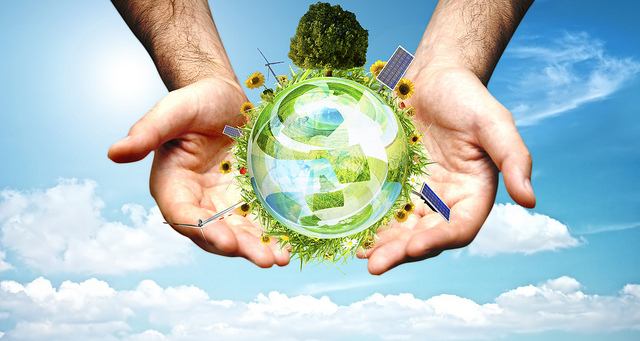 NEWS
NEWS
 NEWS
NEWS
 NEWS
NEWS
In a report released by Apple, Inc. last week the company released its annual “Environmental Responsibility Report” for 2016 in which the company revealed that in 2015 it recovered over 61 million pounds of materials from broken products. Highlights from the report include the recovery of over 2,204 pounds of gold at a market price of approximately $40 million.
Earth Day 2016 is Friday, March 22nd, which makes this a very good time for Apple to toot its own horn about what kind of work its doing to make the Earth a better place. Consumer electronics represent a massive strain on the environment from production, shipment, use and the eventual e-waste generated when products are discarded. According to a 2015 report by the United Nations University (UNU) humanity produced 41.8 million tonnes of e-waste in 2014.
Electronic components, especially consumer computational electronics, depend heavily on precious metals such as gold. And this isn’t just for show, even those gold plated iPhones use gold in their electronics to get the work done. Every time a cellphone, laptop, smartwatch or PC goes into a landfill all of its precious metals and resources get buried, which both fills up the landfill with junk and increases the need to continue to rip those materials from the Earth via mines.
Cobalt and lithium can be recovered from the battery, gold and copper come from the camera, silver and platinum come from the module board and CPU, glass and steel also make up screws, housing parts, and screen that can be recovered. Some of these materials come in very small quantities per-phone, but Apple collected 90 million pounds of e-waste in 2015 and the small stuff adds up fast.
To recover these materials, Apple even has a specialized line of robots, named “Liam”, designed to disassemble 1.2 million phones a year. The Liam is a 29-armed disassembly robot that strips phones and organizes components for easy recycling. “Liam prototypes are operating in California and the Netherlands. It’s an experiment in recycling technology,” Apple’s report states, “and we hope this kind of thinking will inspire others in our industry.”
Although the report does not say that Liam is the only resource used to recover these materials. The workhorse for this recycling comes from 160 recyclers around the world that Apple works with to process the e-waste. [Ed. note: It seems that this is indeed the case and Apple pays services for recycling old electronics according to state laws–Liam, and even Apple products themselves, likely represents a very small percentage of recovered materials.]
In what sounds like amazing work, Apple reports that 100 percent of its datacenters run on 100 percent renewable energy. The company’s data centers have been at 100 percent renewable energy since 2013—which list out as a mixture of solar PV projects, biogas fuel cells, wind power (in Oregon and California) and even geothermal (in Nevada).
“Three of our data centers—in North Carolina, Oregon, and Nevada—earned Leadership in Energy and Environmental Design (LEED) Platinum certification from the U.S. Green Building Council, the highest level possible,” the report says.
There’s no information available on emergency backup systems, which are most often diesel fuel generators, which could be presumably run on biodiesel.
To keep the trend of renewable energy use, Apple has worked with energy provider Sunseap (Sunseap Enterprises Pte. Ltd.) to source energy from solar panels on more than 800 rooftops in the city for roughly 32 megawatts. The vision of this project is to provide all the power for the company’s Singapore offices and its part of the shared datacenter in the city.
Finally, the company also has gotten 97 percent of its Apple Stores fully on renewable energy, which is actually extremely impressive. As of April 2016, 463 Apple Stores in 13 countries now run on 100 percent renewable energy.
THANK YOU